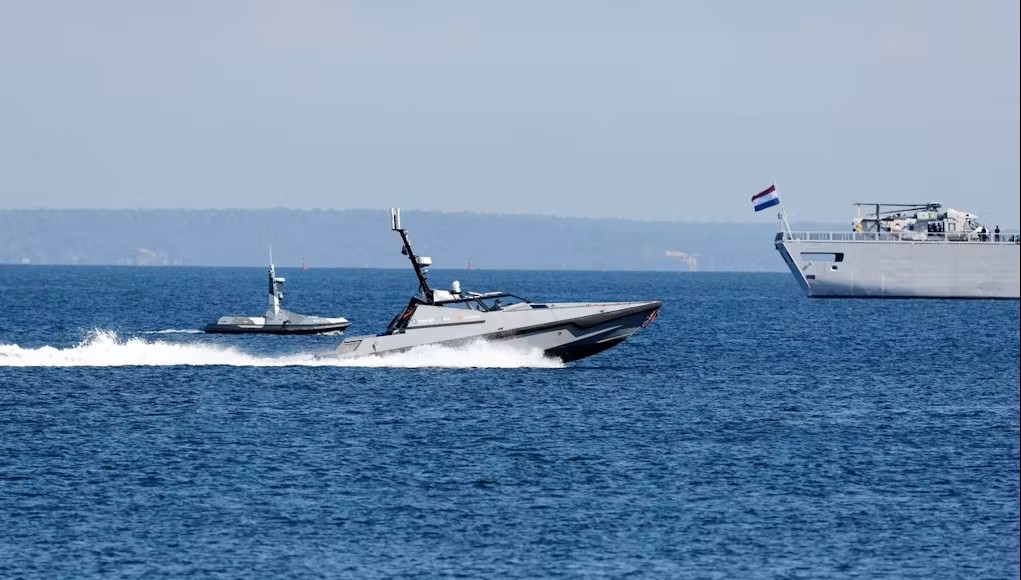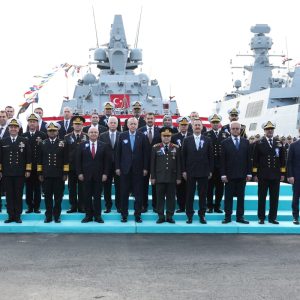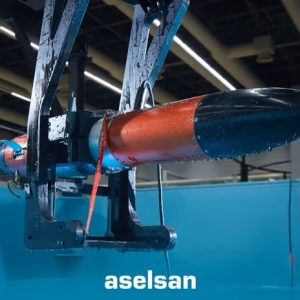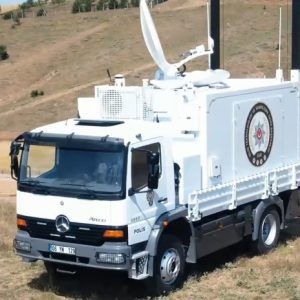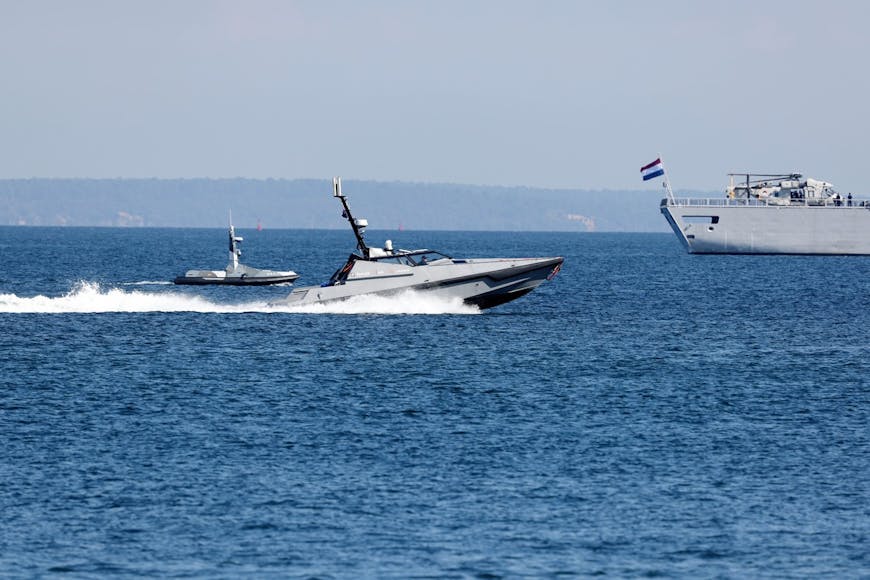
NATO has launched REPMUS/Dynamic Messenger 2025 off Portugal’s Atlantic coast. This event pairs a technology-heavy experimentation campaign with an operational phase that pushes prototypes toward fleet use. The Robotic Experimentation and Prototyping with Maritime Unmanned Systems (REPMUS) series now runs alongside Dynamic Messenger, creating a continuum from lab to ship to task group. According to official releases, the Portuguese Navy hosts the exercise and co-organises it with Allied Maritime Command (MARCOM) and Allied Command Transformation (ACT). Participants include Allied navies, partners, academia, and industry. [1][2][3][4]
Key facts at a glance
- Scale: >2,000 participants; ~260 systems from 22 Allied nations; observers from 13 additional countries. [1]
- Timeline & location: 8–25 September 2025 in Tróia and Sesimbra. Dynamic Messenger commences mid-exercise. [2]
- Focus areas: protection of subsea infrastructure, mine warfare, undersea warfare, counter-UxS, and multi-domain command-and-control. [1][4][5]
- Innovation pipeline: several firms supported by NATO’s DIANA accelerator are participating and testing relevant tech. [5]
Why REPMUS/DYMS25 matters
REPMUS has matured into NATO’s flagship sandbox for maritime uncrewed systems. Meanwhile, Dynamic Messenger stress-tests those systems in realistic conditions. Together, they close the gap between prototype and doctrine. This combination accelerates tactics, data standards, and human–machine teaming in weeks rather than years. [1][4]
The Portuguese Navy’s role goes beyond logistics. Its ecosystem—centred on the University of Porto’s LSTS lab and NATO’s Centre for Maritime Research and Experimentation—offers a repeatable venue where scientists, operators, and industry iterate together. Consequently, REPMUS/Dynamic Messenger 2025 becomes not just a demo day but a yearly loop that compounds interoperability across the Alliance. [2][3]
Operational threads: from seabed to air
The exercise spans the full water column and adjacent domains. At the seabed, autonomous sensors and UUVs trial new methods for critical undersea infrastructure (CUI) protection. On the surface, larger USVs conduct mine countermeasures and support anti-submarine warfare. In the air, UAVs extend sensing and targeting. All of this links through multi-domain C2 under contested-spectrum conditions. [3][4][6][7]
The UK’s participation illustrates this layering. Royal Navy teams test uncrewed systems across surface, subsurface, air, and cyber missions. They focus on protecting infrastructure, tracking submarines, and integrating payloads. Thus, the emphasis falls on connectivity, data fusion, and mission flexibility rather than a single platform. [3]
From experimentation to adoption
A persistent criticism of defence innovation is the “demo valley of death.” REPMUS/Dynamic Messenger 2025 seeks to overcome this gap. In practice, Dynamic Messenger functions as NATO’s operational experimentation crucible. Concepts proven in REPMUS are handed to commanders. Mission packages integrate into realistic serials, and data standards face real comms limits and adversary surrogates. This is where ideas meet bandwidth, sea state, and command intent. [4][7]
NATO’s Defence Innovation Accelerator for the North Atlantic (DIANA) provides financial and advisory support. Through this pipeline, innovators gain funding, access to test centres, and end-user pathways. These conditions increase the chances that a prototype tested this September reaches a procurement board by spring. [5]
Strategic signal: deterrence through adaptation
The strategic value of REPMUS/DYMS25 builds cumulatively. First, it hardens Allied deterrence by proving NATO can detect and respond to threats at scale. Second, it reduces the cost-exchange ratio that favours cheap drones. This is achieved through layered counter-UxS and AI-enabled detection. Third, it builds interoperability not only between Allies but also with partners. [1][3][4]
Finally, it guides navies under budget pressure. By emphasising common data fabrics, open interfaces, and modular payloads, fleets gain flexibility while reducing risk. When one USV can tow a sonar one day and deploy a counter-mine payload the next, procurement becomes more efficient. This philosophy now shapes NATO experimentation. [4][7]
What to watch next
1) CUI protection playbook
Expect more formalised playbooks for protecting subsea cables and pipelines. These will combine persistent UUV patrols, opportunistic sensing from commercial traffic, and rapid attribution. Lessons from this exercise will likely inform standing guidance for Allied maritime headquarters. [4]
2) Interface standards and AI assist
Interface layers that let drones, ships, and headquarters communicate remain the bottleneck. Trials this year should yield clearer guidance for data models, message sets, and latency tolerance. These standards are essential for AI-assisted target recognition and de-confliction. [7]
3) Rapid adoption pathways via DIANA
Watch which DIANA-backed firms progress from demo to deployment. The combination of transparent test data from REPMUS and operational serials in Dynamic Messenger can de-risk contracts and speed up foreign military sales. [5]
“By combining the REPMUS series with the operational environment of Dynamic Messenger, we reinforce the core objectives of both exercises while providing NATO, its Allies, and partners with a unique opportunity to explore the latest technological innovations and unmanned systems.”Spanish Navy Capt. Julio Hernández, MARCOM Exercises (press statement). [1]
Context for Türkiye and regional navies
For Türkiye and Black Sea–adjacent Allies, these outcomes are directly relevant. They apply to coastal defence, harbour protection, and mine countermeasure modernisation. The doctrine and interface work tested off Portugal can translate to the Aegean and Eastern Mediterranean. In these regions, dense shipping, energy infrastructure, and contested spaces demand modular, networked solutions. [4]
Related analysis
For a complementary look at autonomous maritime strike and reconnaissance, see our coverage of Türkiye’s sea-skimming WIG combat drone. This case intersects with REPMUS/Dynamic Messenger 2025 themes on low-observable approaches and maritime ISR.
References
- NATO MARCOM — Dynamic Messenger 2025 announcement
- Marinha Portuguesa — REPMUS 2025 launch
- Royal Navy — UK participation
- NATO — Dynamic Messenger explainer
- NATO DIANA — 2025 cohort
- GOV.UK — REPMUS/DYMS25 Calling Notice
- Naval News — USV integration
- UK Defence Journal — original report
Further Reading
NATO: Exercises with new maritime unmanned systems

